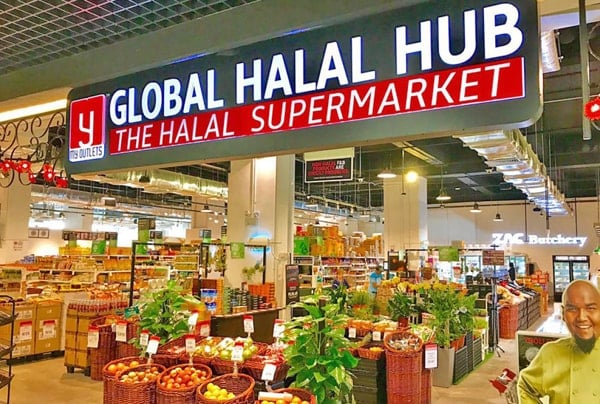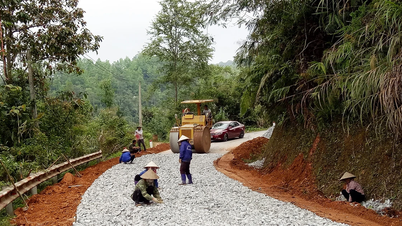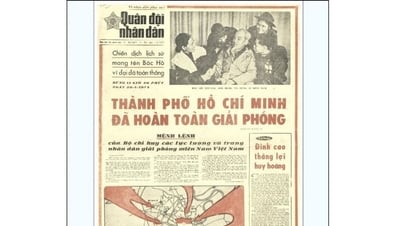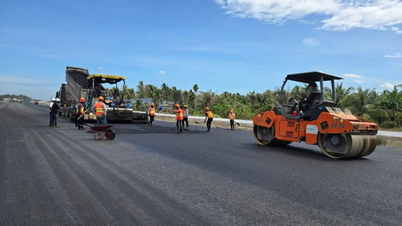From shrimp export redirection
The US market currently contributes 33% of total shrimp export revenue of Sao Ta Food JSC (FMC). However, in the coming time, FMC's revenue and profit in this key market will likely decrease sharply due to the impact of the US imposing high taxes on Vietnamese seafood products.
In that context, according to the latest report from the Analysis Department of ABS Securities Company, FMC is implementing a strategy to expand into new markets such as Canada and Australia, which have strict import standards. With the advantage of being self-sufficient in shrimp farming areas, FMC will easily penetrate these markets.
For the Japanese market (currently accounting for 28% of revenue), FMC will increase its presence, taking advantage of the strengths that the business has built. Japan favors deeply processed products, one of the products that FMC is producing and developing. In addition, the Korean market is also assessed by FMC as having potential for output growth.
Regarding the Chinese market, Mr. Ho Quoc Luc, Chairman of the Board of Directors of FMC, said that this is a leading potential market, but to penetrate, FMC needs to meet all the conditions that are not yet met. When the conditions are favorable, FMC will be ready to join.
Mr. Luc also said that he is not too worried about having to withdraw from the US market, because FMC has prepared alternative plans. The process of approaching new markets does not take too much time, and can even be implemented this year. Although there are costs associated with expanding to new markets, this number is not too large and can be controlled.
Furthermore, FMC can support prices in the early stages and then develop long-term with old partners who have trusted and are willing to expand imports if FMC proactively provides.
At the same time, Camimex Group Joint Stock Company (CMX), a large shrimp export enterprise, has shifted its focus from the US to potential markets such as the EU, South Korea, Japan and Canada. Currently, 95% of Camimex's export revenue comes from these markets, while the US only contributes a very small proportion. As a result, Camimex's export revenue in April 2025 is expected to be 2.5 times higher than the same period in 2024. In the first quarter of 2025 alone, their export revenue reached 19.66 million USD, 2.15 times higher than the same period last year.
It is necessary for businesses to shift to new markets to minimize the negative impact of the US's high tariffs on Vietnamese seafood products. The target of reaching 4 billion USD in shrimp exports in 2025 will face many difficulties due to the impact of US reciprocal tariffs and global competition. This is the "golden" time for businesses to adjust their strategies and begin expanding to potential new markets.
Experts recommend that shrimp exporting enterprises should take advantage of free trade agreements (FTAs) such as EVFTA, CPTPP, RCEP to expand their markets. At the same time, they need to target large shrimp consuming markets such as Japan, Korea, Canada and European countries. In particular, the Halal market (for Muslims) is also considered to have great potential, helping enterprises offset orders from the US if the corresponding tax is not changed in the expected direction after the 90-day tax deferral period ends.

Come explore the optimization opportunity
Regarding the Halal market, at a workshop held in Ho Chi Minh City on April 28, to discuss promoting international cooperation in the Halal industry between Vietnam and Indonesia, Mr. Tran Phu Lu, Director of the Ho Chi Minh City Investment and Trade Promotion Center (ITPC), recommended that Vietnamese export enterprises need to change their business models, focusing on potential markets such as Halal to expand exports, while preparing to deal with the risk of decline from traditional markets.
According to Mr. Lu, the Halal industry and the Halal product market still have a lot of potential. It is forecasted that by 2033, the global Halal market could reach 5,912 trillion USD in the food and beverage (F&B) industry and will reach 10 trillion USD by 2030, including F&B and other industries.
Specifically, for the Indonesian market, Mr. Lu said that this is the largest Halal market in the world, with more than 280 million people, most of whom are Muslims. This is a great opportunity for Vietnamese businesses to promote the export of Halal-certified products to this market. However, he also noted that strict Halal standards and complex certification systems will be a big challenge for businesses.
According to Mr. Agustaviano Sofjan, Consul General of Indonesia in Ho Chi Minh City, the Halal industry is a key area of cooperation between Vietnam and Indonesia, not only meeting the needs of the Muslim community but also attracting attention from global consumers thanks to its commitment to quality and safety.
In addition to the Halal market, the South American market is also considered to have great potential, requiring Vietnamese exporters to accelerate their penetration. Specifically, Chile is affirming its position as a strategic export destination, not only a trade gateway but also a strategic partner to help Vietnamese enterprises expand their market in South America, a region with a total GDP of up to 4,000 billion USD and a population of 431 million people.
With new markets like Chile, Vietnam has the opportunity to increase its presence, especially in the agricultural processing and export industry, thanks to free trade agreements and tax incentives. Experts believe that FTAs are a factor that promotes trade growth, with Vietnam's export turnover to Chile increasing by about 500% in the first 10 years of implementing VCFTA (Vietnam - Chile Free Trade Agreement).
Mr. Pablo Arancibia Salazar, Trade Representative, Chilean Export Promotion Agency (ProChile), said that to optimize opportunities, Vietnamese enterprises need to diversify export products to the Chilean market and ensure stable supply of raw materials.
Ms. Bui Hoang Yen, Head of the Southern Trade Promotion Agency Office (Ministry of Industry and Trade), also warned that Vietnamese enterprises will face many challenges when entering the Chilean market, such as logistics costs 25-30% higher than those in Asian countries, long transportation times, competitive pressure due to Chile having signed many other FTAs, and technical barriers. This requires Vietnamese enterprises to invest in technology, improve management systems, and receive support in policies and market information.
Source: https://baodaknong.vn/day-manh-chien-luoc-dua-hang-viet-vuon-ra-cac-thi-truong-quoc-te-moi-tiem-nang-251039.html



![[Photo] Panorama of the parade celebrating the 50th anniversary of the Liberation of the South and National Reunification](https://vphoto.vietnam.vn/thumb/1200x675/vietnam/resource/IMAGE/2025/4/30/affbd72e439d4362962babbf222ffb8b)



![[Photo] Mass parade to celebrate 50 years of national reunification](https://vphoto.vietnam.vn/thumb/1200x675/vietnam/resource/IMAGE/2025/4/30/825e459ee2f54d85b3a134cdcda46e0d)
















![[Photo] Fireworks light up the sky of Ho Chi Minh City 50 years after Liberation Day](https://vphoto.vietnam.vn/thumb/1200x675/vietnam/resource/IMAGE/2025/4/30/8efd6e5cb4e147b4897305b65eb00c6f)




































































Comment (0)